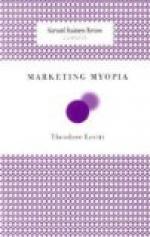M. Bechamp has applied Mitscherlich’s observation, concerning the soluble fermentative part of yeast, to fungoid growths, and has made the interesting discovery that fungoid growths, like yeast, yield to water a substance that inverts sugar. When the production of fungoid growths is prevented by means of an antiseptic, the inversion of sugar does not take place.
We may here say a few words respecting M. Bechamp’s claim to priority of discovery. It is a well-known fact that we were the first to demonstrate that living ferments might be completely developed if their germs were placed in pure water together with sugar, ammonia, and phosphates. Relying on this established fact, that moulds are capable of development in sweetened water in which, according to M. Bechamp, they invert the sugar, our author asserts that he has proved that “living organized ferments may originate in media which contain no albuminous substances.” (See Comptes rendus, vol. ixxv., p. 1519.) To be logical, M. Bechamp might say that he has proved that certain moulds originate in pure sweetened water without nitrogen or phosphates or other mineral elements, for such a deduction might very well be drawn from his work, in which we do not find the least expression of astonishment at the possibility of moulds developing in pure water containing nothing but sugar without other mineral or organic principles.
M. Bechamp’s first note on the inversion of sugar was published in 1855. In it we find nothing relating to the influence of moulds. His second, in which that influence is noticed, was published in January, 1858, that is, subsequently to our work on lactic fermentation, which appeared in November, 1857. In that work we established for the first time that the lactic ferment is a living, organized being, that albuminous substances have no share in the production of fermentation, and that they only serve as the food of the ferment. M. Bechamp’s note was even subsequent to our first work on alcoholic fermentation, which appeared on December 21st, 1857. It is since the appearance of these two works of ours that the preponderating influence of the life of microscopic organism in the phenomena of fermentation has been better understood. Immediately after their appearance M. Bechamp, who from 1855 had made no observation on the action of fungoid growths on sugar, although he had remarked their presence, modified his former conclusions. (Comptes rendus, January 4th, 1858.)] These are remarkable facts, which are, however, at present but vaguely connected with the alcoholic fermentation of sugar by means of yeast. The researches in which we have proved the existence of special forms of living ferments in many fermentations, which one might have supposed to have been produced by simple contact action, had established beyond doubt the existence of profound differences between those fermentations, which we have distinguished as fermentations proper, and the phenomena connected with soluble substances.




